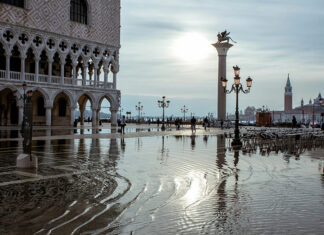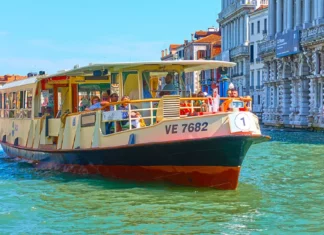Overlooking the Grand Canal, Ca’ Pesaro houses both the International Modern Art Gallery and the Oriental Art Museum. This huge and majestic Baroque marble palace – located in the Santa Croce sestiere – was originally designed by Baldassarre Longhena in the 17th century and completed at the beginning of the 18th.
Its two rows of enormous pillars create the illusion of a double loggia, which makes this palace look massive. Ca’ Pesaro is part of the eleven museums run by the Fondazione Musei Civici di Venezia (Venice Civic Museums Foundation). The Gallery of Modern Art comprises ten rooms, each dedicated to a specific topic or historic time. Masterpieces by Kandinsky, Mirò, Boccioni, Morandi, de Chirico, Fattori, and de Nittis decorate the walls of most of the rooms, while the Central Hall is dedicated to works from the first Venice Biennale up to the 1950s. The last room is devoted to Contemporary Art, where temporary exhibitions by young artists occur very often.
The upper floor hosts the Oriental Art Museum. Venice has played throughout history a crucial role in economic trade and cultural exchange, especially with the Far East, and has been a bridge between Western and oriental cultures. More than 30,000 objects from Japan, Indonesia, and China are housed on this floor, taking the visitor back to the time when Venice was a key player in the economic world scene.
It’s interesting to know that during the first two decades of the XXth century Ca’ Pesaro has also played a revolutionary role in the Italian artistic scene, having been a starting point for the careers of young rebellious artists that wanted to break with tradition.




